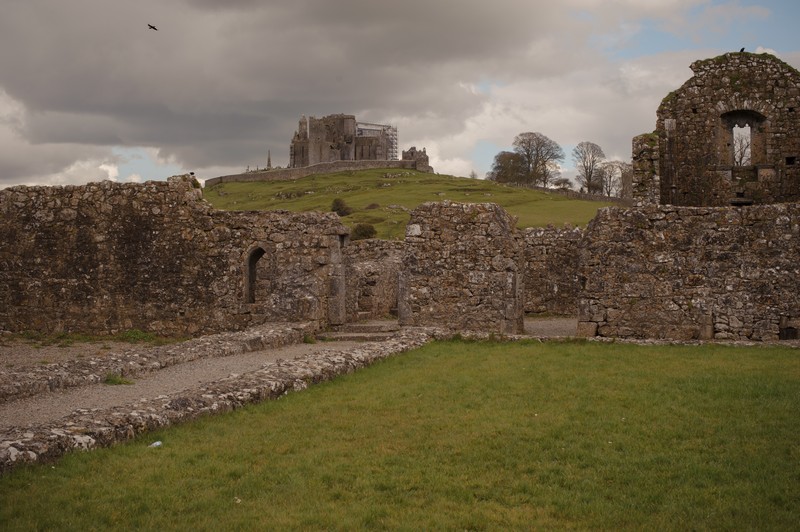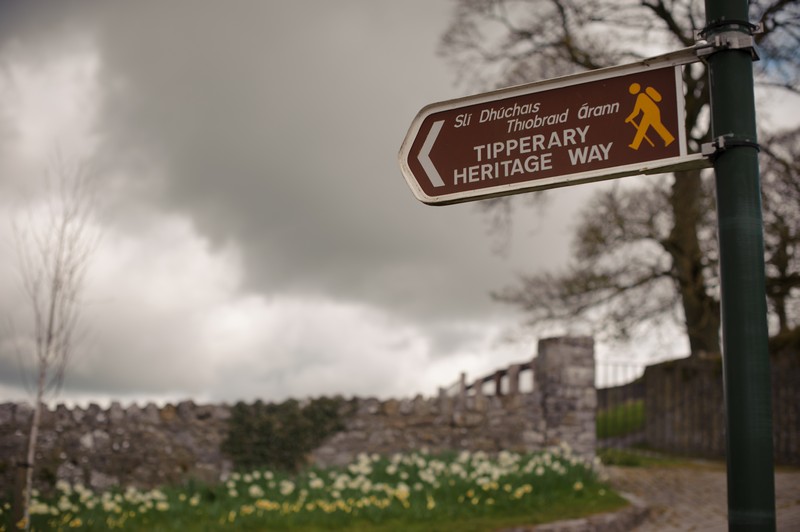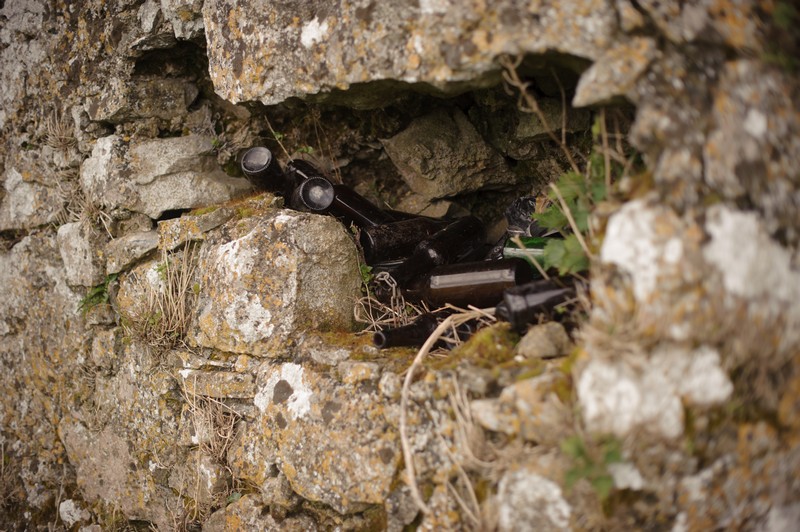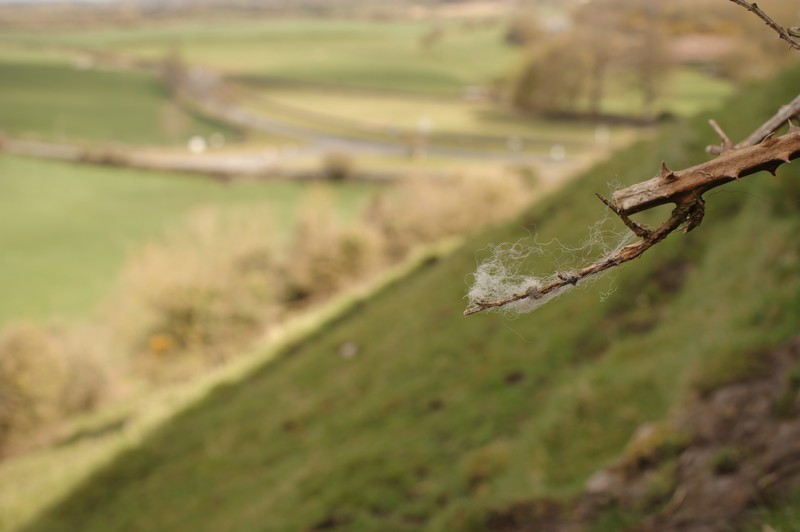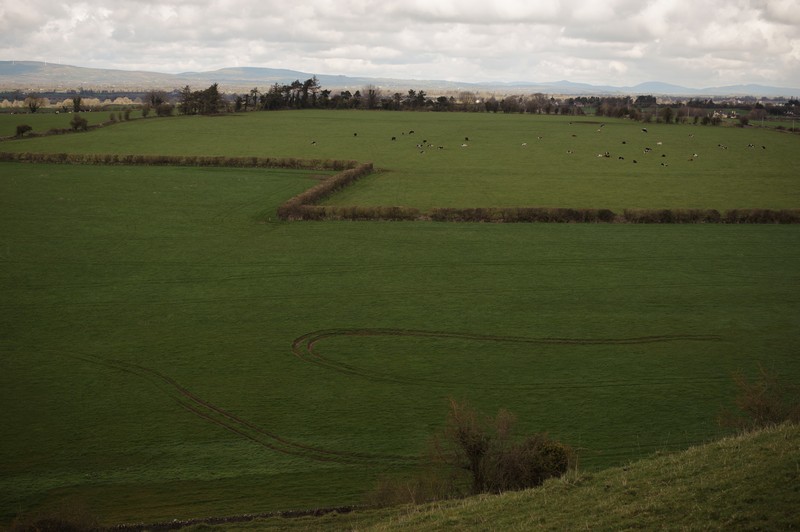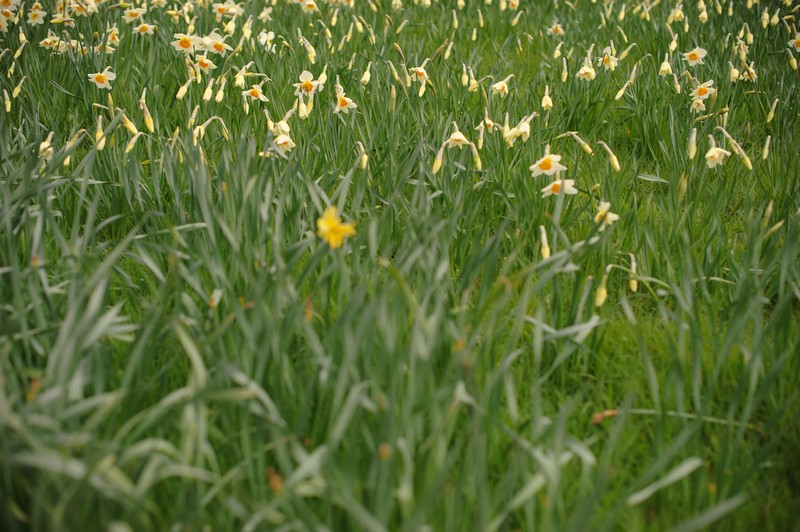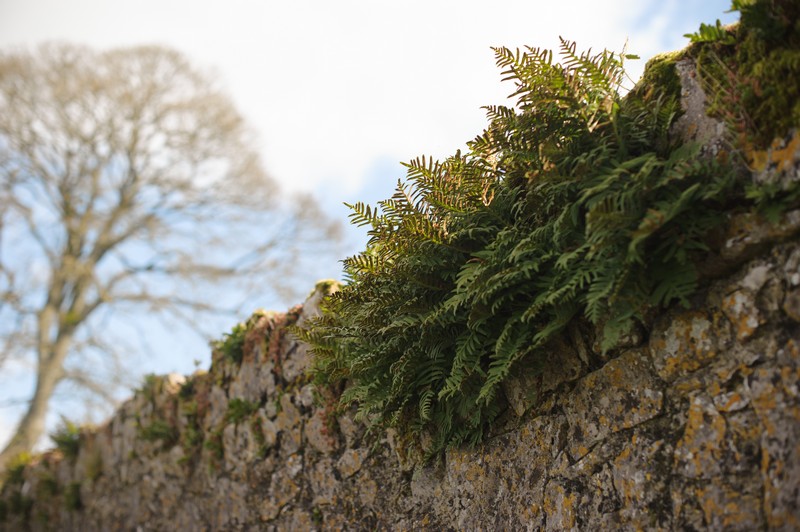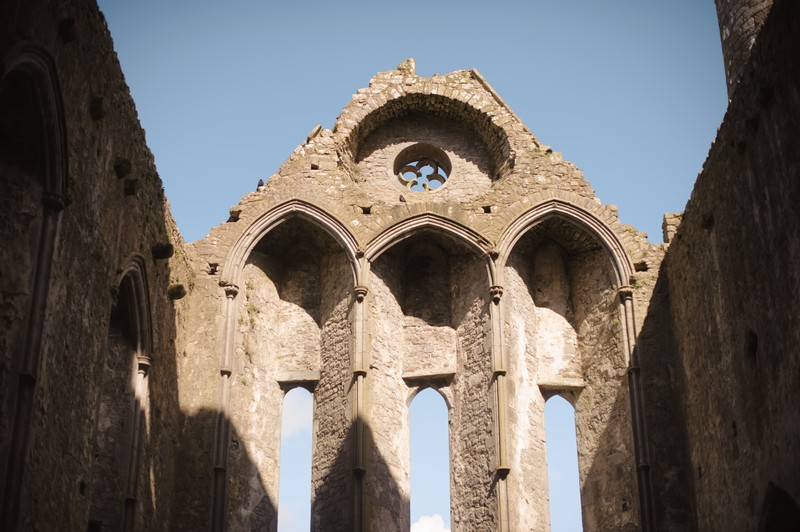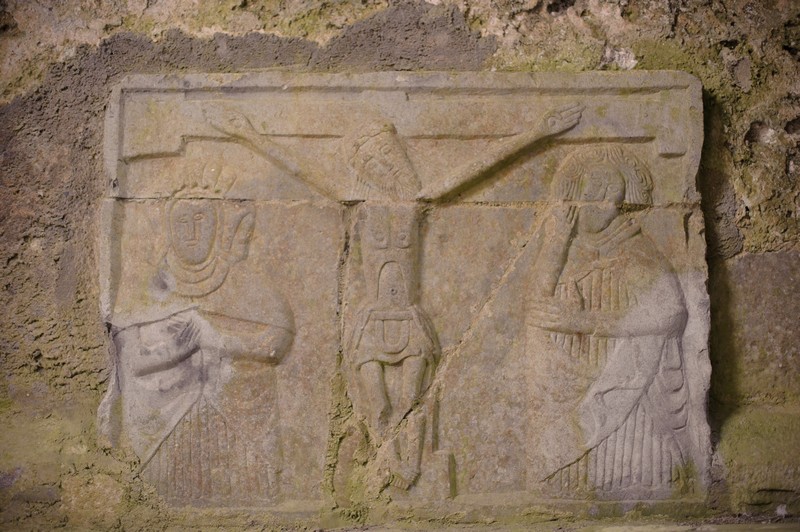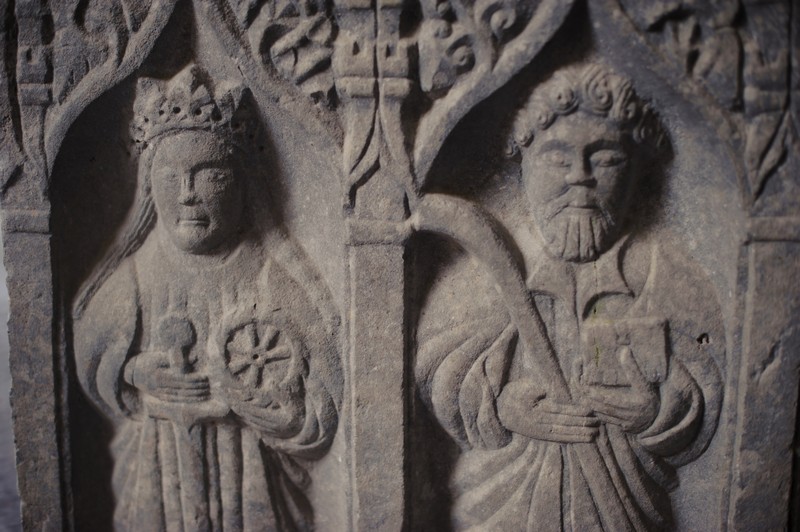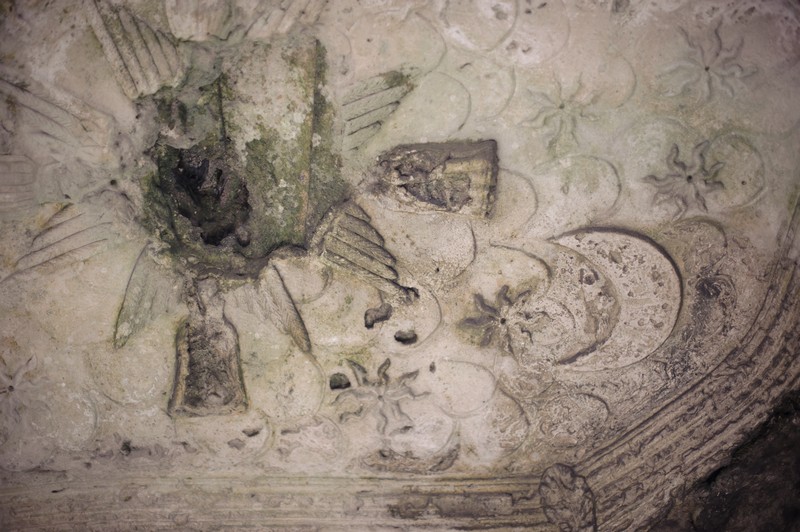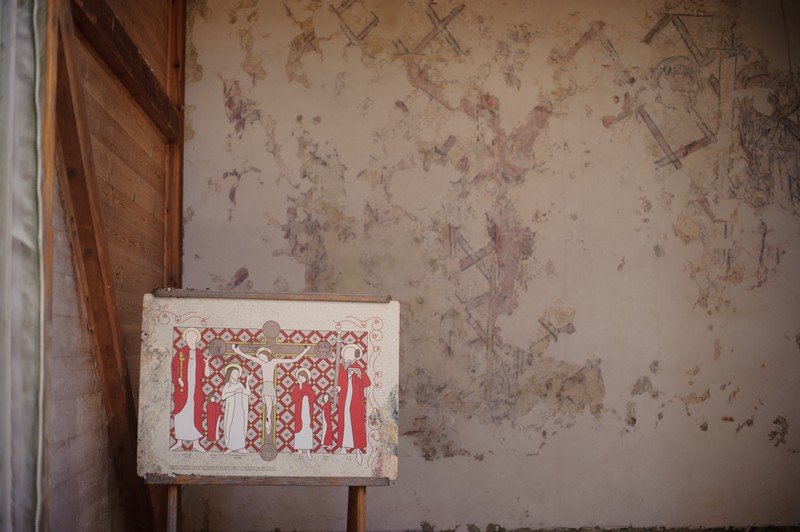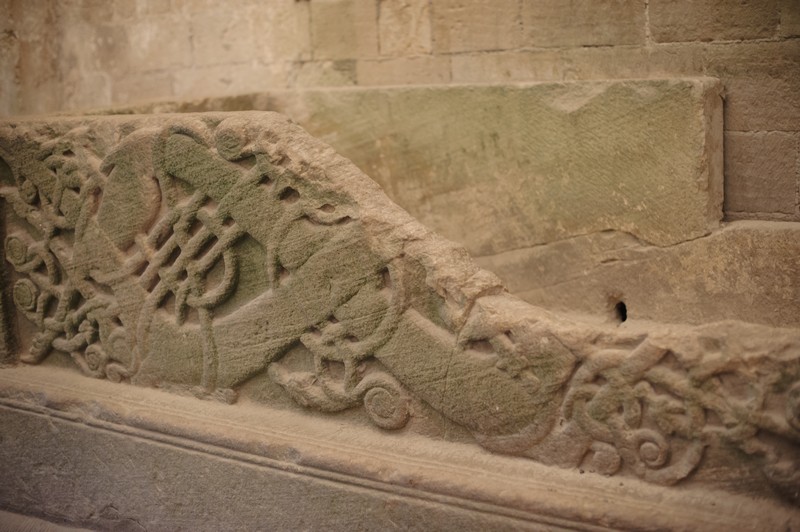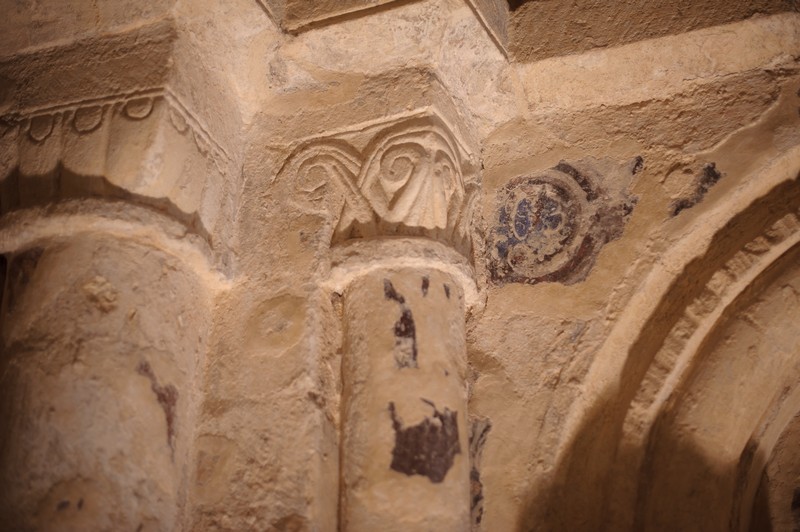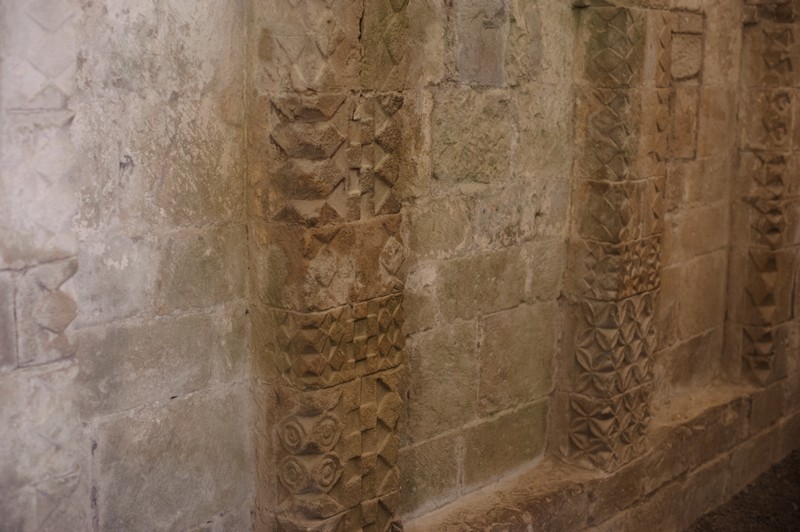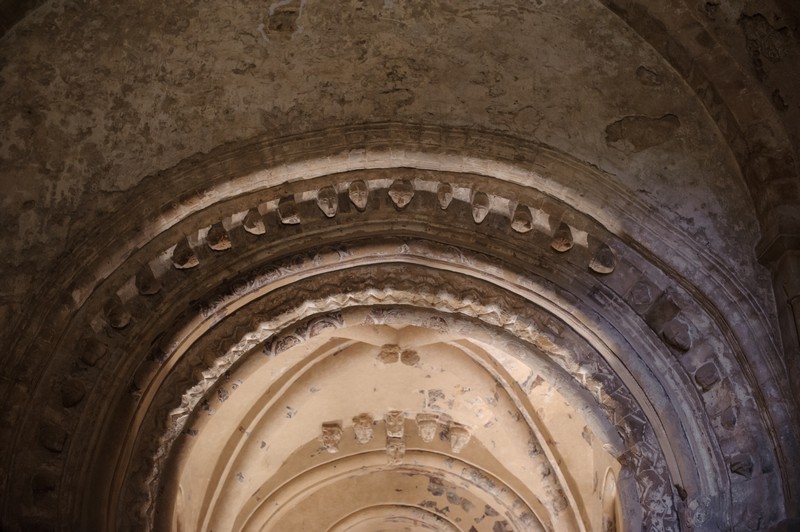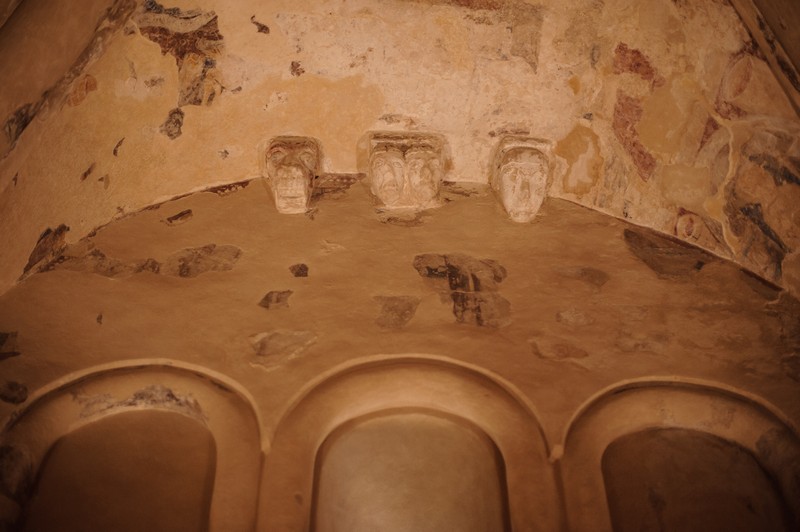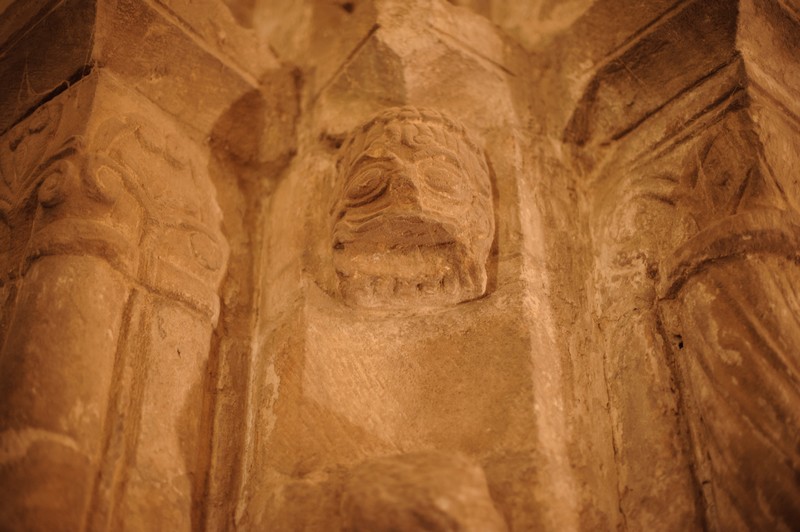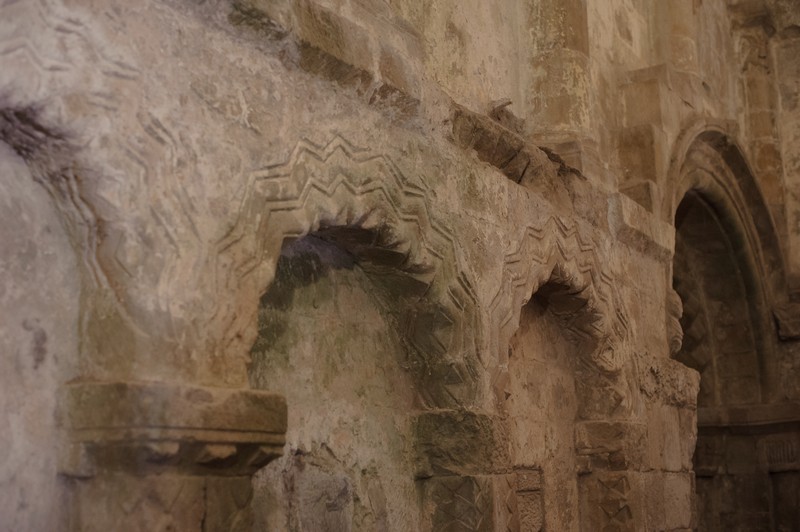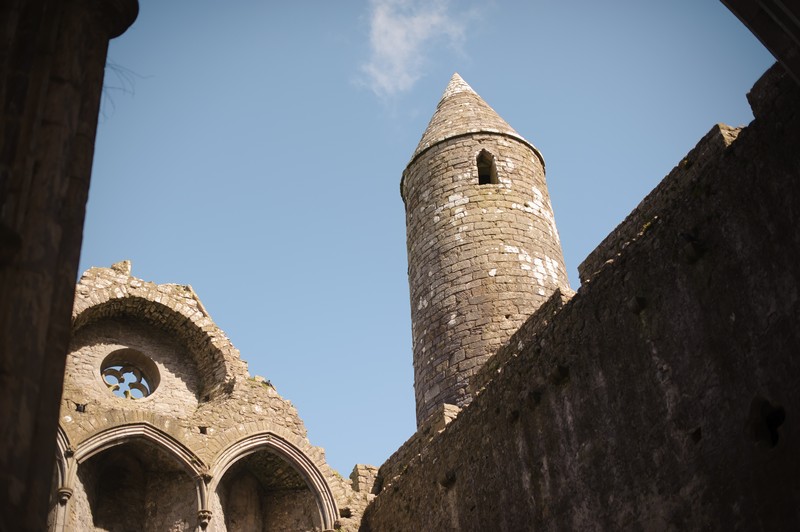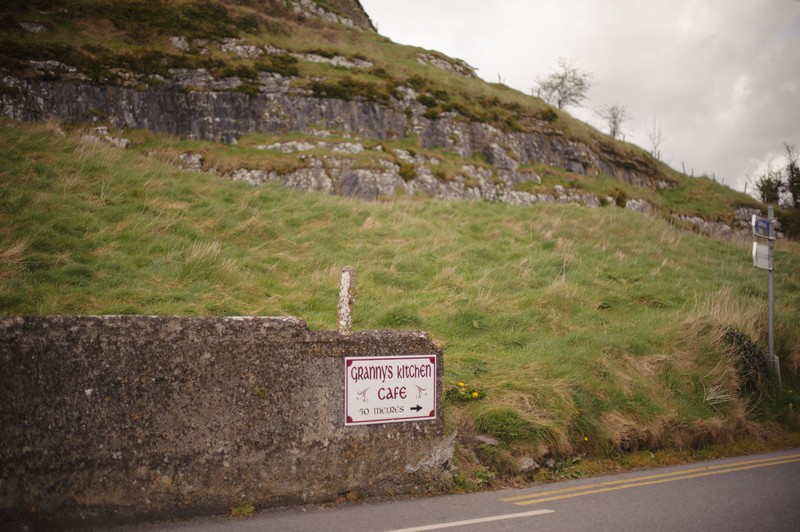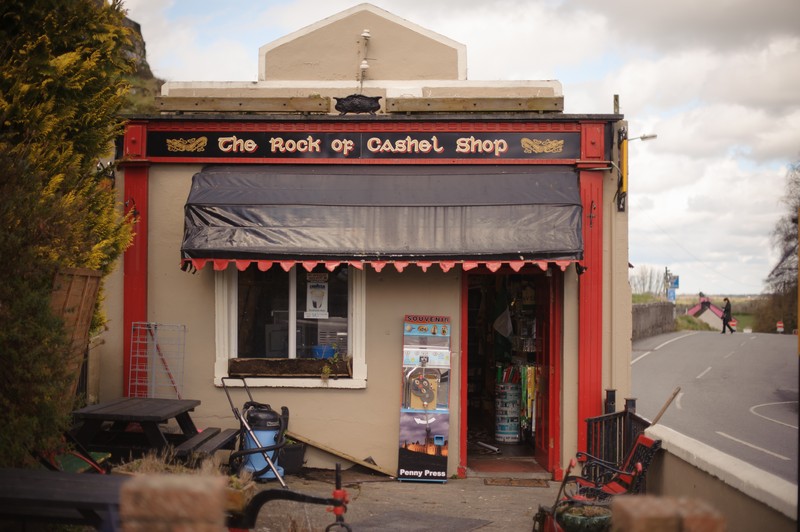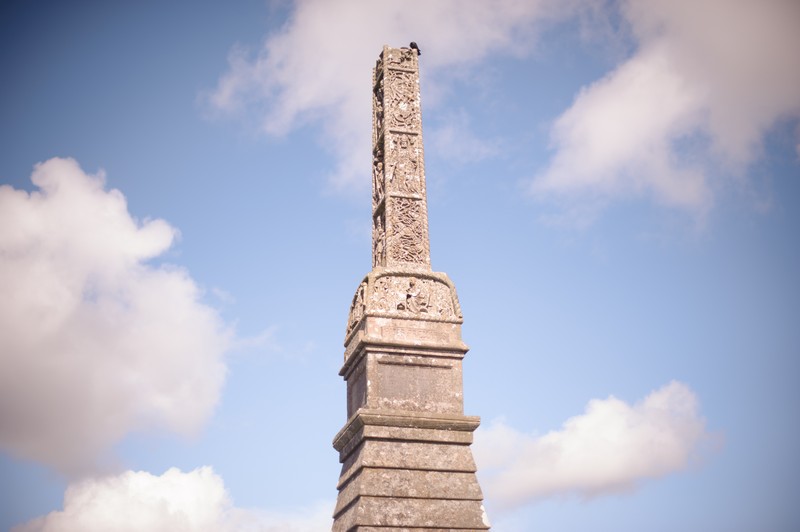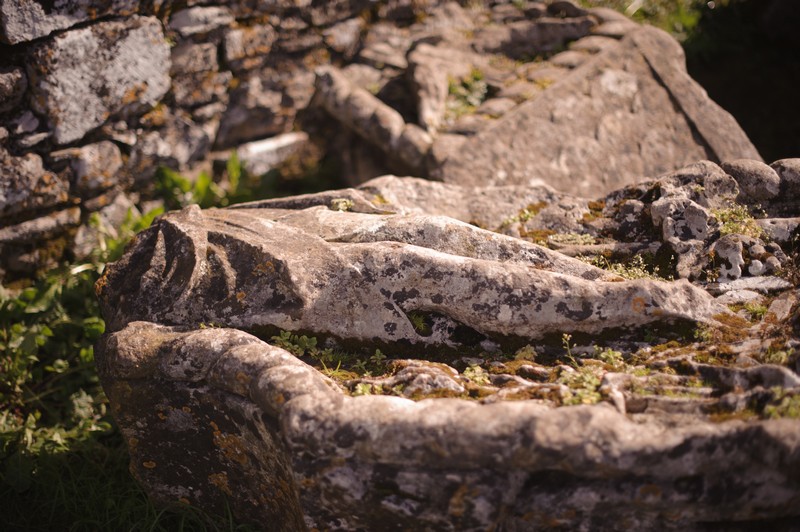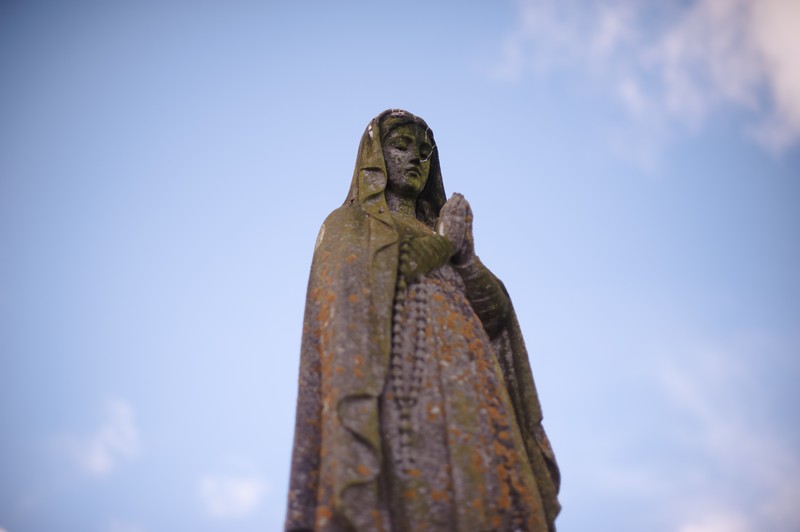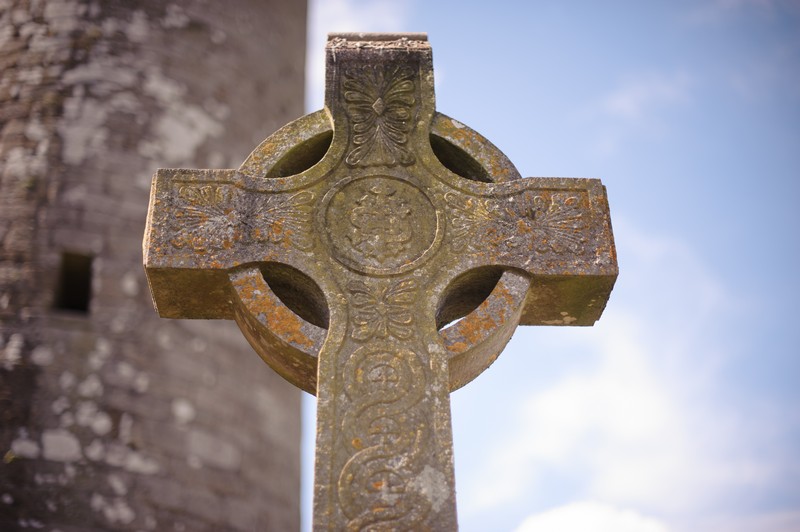There’s a bit of mythology surrounding the history of how the rock that the fortress is built on was formed. The story is that St. Patrick banished the Devil from a mountain about 30 kilometres to the north. As far as I understand, it seems like the Devil bit that mountain (for whatever reason), causing a gap in the mountain. That mountain is called Devil’s Bit today. Such strange behaviour resulted in the Devil breaking his teeth. He then spat that bit of rock out out a distance away and that was called the Rock of Cashel. The Irish name of the place is Carraig Phádraig (Patrick’s Rock or Stone).
Apparently in the 5th century, the King of Munster was converted here at The Rock of Cashel, by St. Patrick. It was traditionally were the kings of the time stayed (it is also called Cashel of the Kings). Centuries later, in 1101, another King of Munster, Murtough O’Brien (Muirchertach Ua Briain), donated the fortress to the Church. It was around this time that a dry stone round tower was added to the fortress.
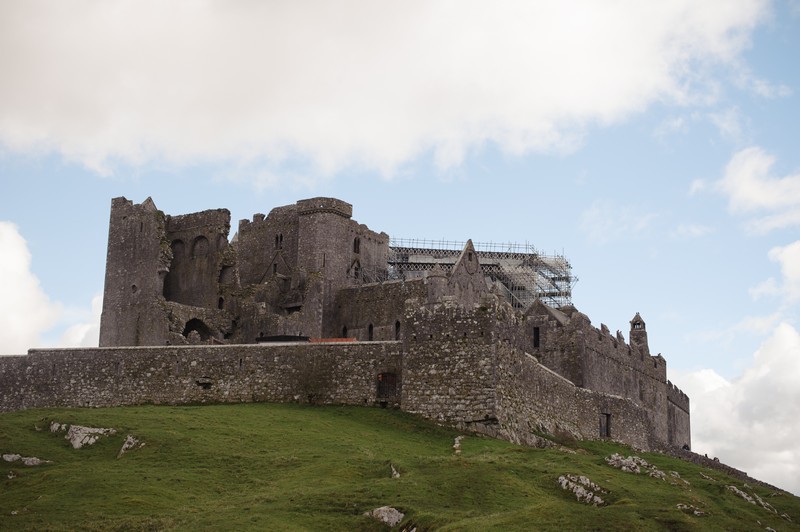
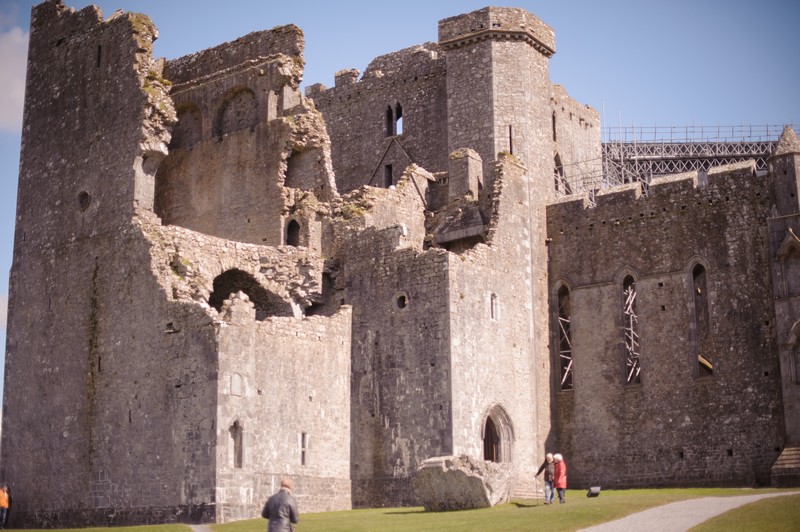
Near the fort is a chapel and a cathedral. Cormac’s Chapel was built from 1127 and inside are remains of murals, gargoyle faces and interesting patterns on the arches and pillars. In the middle of the Confederate Wars in the seventeenth century, Cashel was sacked and vandalised. Sadly many important artefacts were taken and the Irish troops and clergy on site were all massacred. During the Reformation, what might have been left of the murals were seen as a form of idolatry and were painted over with lime-wash.
A very good reason to visit this site would be to see the medieval architecture and the beautiful remains of Celtic art (apparently one of the most notable collections in Europe!). Steps have been taken to dry out the chapel and slow down the deterioration of the interior.
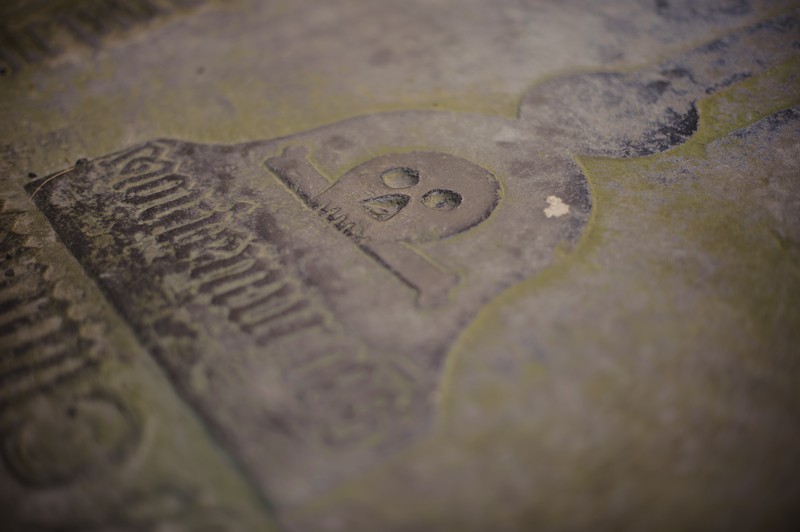
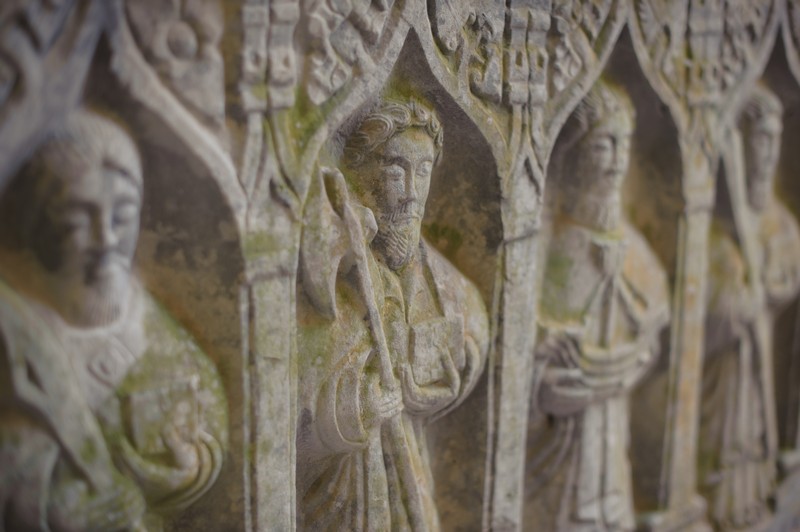
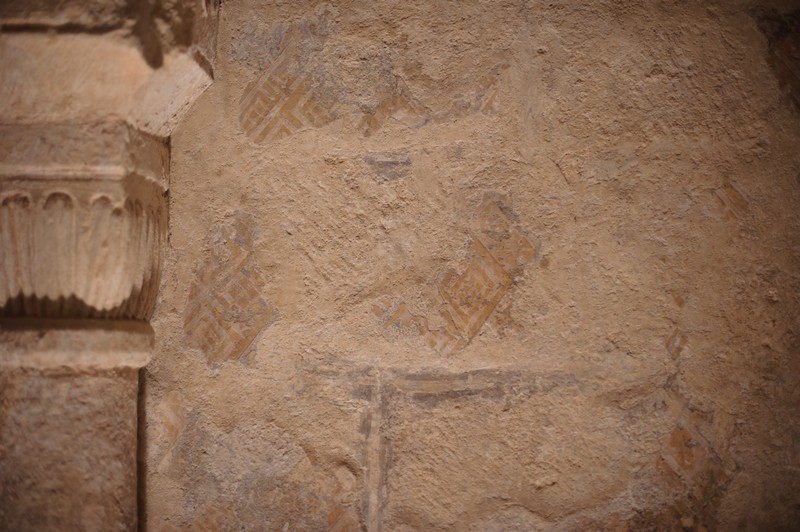
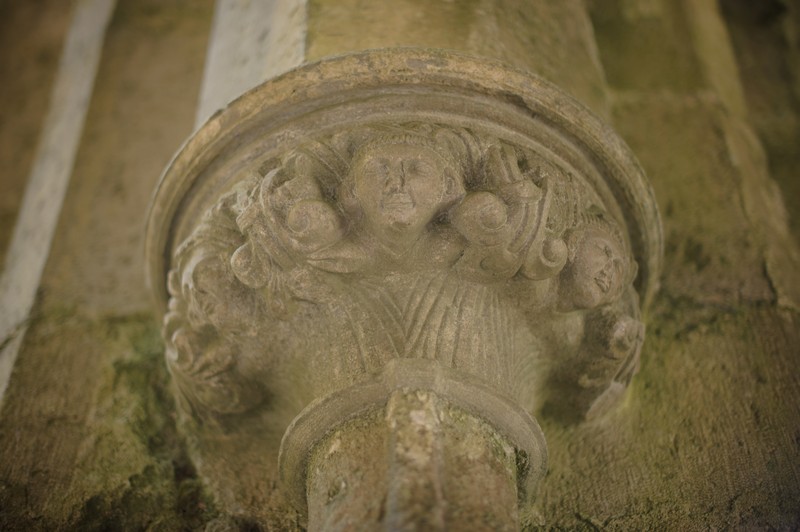
The town its right below the rock and is small enough to explore on foot. The main street has a few restaurants that look good for breakfast, lunch or dinner. Other historical attractions are Cashel Palace and the remains of the medieval city walls.

